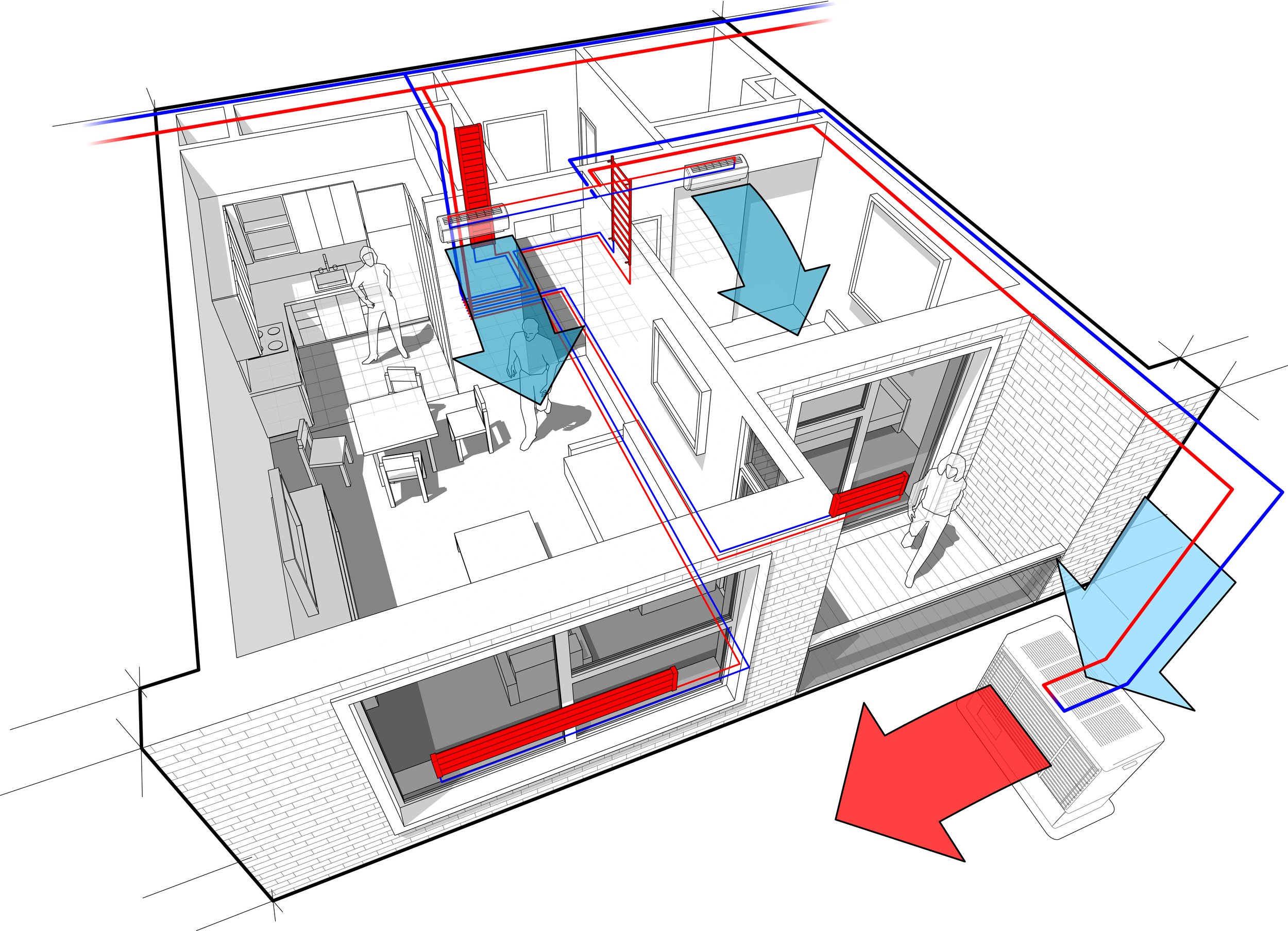Cubit Gas & Heating ensures the Heat Pumps installed are of the utmost quality. Cubit, therefore, has selectively chosen to recommend the Rolls Royce of Heat Pumps, Stiebel Eltron. Our expertise and experience in heating systems have led us to believe this brand is optimal for their low-noise levels and high-efficiency Heat Pumps, making them versatile for residential or commercial projects.
In order to maximize the efficiency of Heat Pumps, it is important to ensure your home or business are well-insulated. Prior to any installation Cubit Gas & Heating carry out insulation and energy surveys to calculate the overall heat loss of your residential or commercial property. This will certify that our Clients will run Heat Pumps at their average energy usage and do not fund more into their running due to a possible lack of insulation. We are aware that no homes are 100% efficient in storing heat energy. Nevertheless, if the efficiency of energy levels are under a certain threshold then a Client cannot reap the full capacity of the Heat Pumps' low running costs should they decide to continue with the installation.
Heat Pumps
Cubit Gas & Heating are proud to be Heat Pumps specialists. Cubit believes clients who choose to install Heat Pumps will reap the numerous rewards they have to offer over traditional heating systems. These advantages include:
Significantly lower running costs
Reduced carbon emissions, because Heat Pumps transfer energy rather than generate energy.
Little maintenance required throughout their noticeably longer lifespan.
A reversing valve within the system allows Heat Pumps to release cool air thus maintaining a stable temperature in your home all year round.
A well-designed Heat Pump like those of Stiebel Eltron is likely to increase the sale value of your property.
Cubit’s Plant Room specialist can install all three different types of Heat Pumps:
Air-Source Heat Pump
Air-Source Heat Pump
Put simply, Air Source Heat Pumps are heating systems that work by transferring heat energy from outdoor air to an indoor space, such as your home or an office building through a fan system. Air Source Heat Pumps are our more popular choice of Heat Pumps for a considerable amount of reasons:
Installation cost is substantially lower.
Less invasive as it does not require groundworks or waterworks.
Reduced maintenance.
In more detail, Air-Source Heat Pumps operate when the air from outside is blown over the exterior part of the pump that heats a special refrigerant liquid to evaporate and form a gas. This gas increases the pressure in a compressor and warms the air. The now warm air is passed over the interior component in your household, consequently warming your home or building.
Ground-Source Heat Pumps
Ground Source Heat Pumps operate by transferring heat energy from the ground into buildings or households. This heat source from the ground is a result of the earth storing heat energy produced by radiation from the sun and is stored near to the surface of the Earth. As a result, Ground Source Heat Pumps require the installation of groundworks, to extract this heat, that professional workers at Cubit G&H can install.
Once the Ground Source Heat pump is installed, only little maintenance is needed on the part of the client, as the ground heating source is naturally replenished and provides heating virtually throughout the year.
Quiet in its operation and issuing no emissions, Ground Source Heat Pumps are another viable Heat Pump option if funds are available for its installation cost and there is enough ground available to out.
Ground-Source Heat Pump
Water-Source Heat Pump
Water-Source Heat Pumps
If your residential or commercial property is situated near an abundant water source like a lake or river, Water Source Heat Pumps are another efficient and economical heating option. An ample benefit is the noticeably higher efficiency ratings compared to other Heat Pumps.
The Water Source Heat Pumps we offer to install operate on a closed-loop system. This consists of a special refrigerant liquid, as used in the Air Source Heat Pumps, pumped through the pipework located in the body of water that absorbs the heat energy in the water. Heat energy is then utilised to warm air that is passed over the interior part of the Heat Pump.





